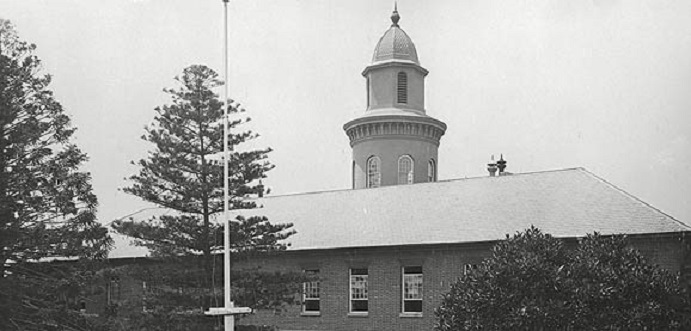… Ian Willis recently gave a public lecture on the Liverpool Field Hospital and its involvement with the Red Cross at the Royal Australian Historical Society at History House in Sydney.
‘All in a muddle’ was how Mrs Isabelle Wallace Turner, the president of the Greenwich Red Cross, described the chaotic situation she witnessed at Liverpool Field Hospital in 1915. There was a shortage of beds, linen, medical supplies and equipment, toiletries, foodstuffs, and other basic essentials. The hospital was caught in a perfect storm of poor planning, under-resourcing and an influenza outbreak.
At the outbreak of the First World War Australians were mostly innocents abroad, though some had participated in the Boer War in South Africa. The young nation entered the fray of war with an enthusiastic response from voluntary recruits for overseas military service and a desire by those left at home to do something to help.
Those at home formed a host of patriotic organisations; one of the most successful was the Australian branch of the British Red Cross (BRC). It was formed in August 1914 within days of the outbreak of war under the inspired leadership of the wife of the Governor General, Lady Helen Munro Ferguson. She drew on the 40 years of experience in war and peace that the BRC had developed since its founding in 1870 and on its most famous volunteer, Florence Nightingale.
While Ellis Ashmead-Bartlett was reporting the Gallipoli landing and creating the Anzac legend things at home were not quite going to plan. The military authorities were overwhelmed by the realities of war, particularly as casualties mounted from the Gallipoli campaign.
Shortages and other problems had emerged at Liverpool Military Camp from its establishment in November 1914. A contributing factor to the chaotic situation at the field hospital was the poor location of the military camp on the Georges River floodplain. An ‘old soldier’, Damper Bill, claimed in the left-leaning Australian Worker that cows would not use the site.
Mrs Wallace Turner started hospital visiting at the Liverpool Military Camp in February 1915. She was alarmed at what she found and on her own initiative organised Red Cross relief goods through the Greenwich Red Cross to try and ameliorate the situation. This was typical of the response of Red Cross workers in a host of situations in the early months of the war.
Over 10,000 individual relief items were sent by Sydney Red Cross headquarters to the hospital between February and July 1915. These items included linen, bedding, hospital clothing, surgical equipment and supplies, toiletries, foodstuffs, and other items including clothes lines, hurricane lamps and cigarettes.
The Parramatta Red Cross under the leadership of Mrs Cook, the wife of the former prime minister, stepped in and fitted out one ward of the field hospital. Other Red Cross branches fitted out other hospital wards and the Parramatta Voluntary Aids provided support services.
Things were finally starting to look up at the hospital when in July 1915 the camp’s problems hit the headlines. The local federal member of parliament, Richard Beaumont Orchard MP, delivered a blistering attack on the mismanagement at the Liverpool Military Camp. The prime minister called a royal commission, hearings were held at the camp, and witnesses detailed a litany of problems. Commissioner Rich’s brought down a series of adverse findings about the camp management, particularly at the field hospital.
The Red Cross did not escape criticism. There were scathing comments from Thomas Anderson Stuart, a member of the general committee of the New South Wales Red Cross and professor of physiology at the University of Sydney. Anderson Stuart accused the Red Cross of misappropriation of funds for providing enamelware and furniture at the camp hospital that he maintained would have otherwise been provided by the military authorities. In August the businessman and politician James Ashton, a member of the executive committee of the New South Wales Red Cross, mounted a strident defence of the organisation’s decisions at the camp. In October Lady Helen Munro Ferguson lambasted critics in a speech at the Sydney Town Hall.
Nevertheless, the exposure of problems did result in improvements. The Sydney branch of the British Medical Association stepped in to provide assistance at the field hospital and the Red Cross Home Hospital Committee supervised other enhancements to its services.
The story of the field hospital and the Red Cross is a small part of a broader picture of how wartime patriotic organisations filled gaps in soldier welfare, ranging from recreational facilities, relief goods, and convalescent and rehabilitation facilities. There was little acknowledgement of these contributions during the war and even today acknowledgement of these efforts is largely silent.
